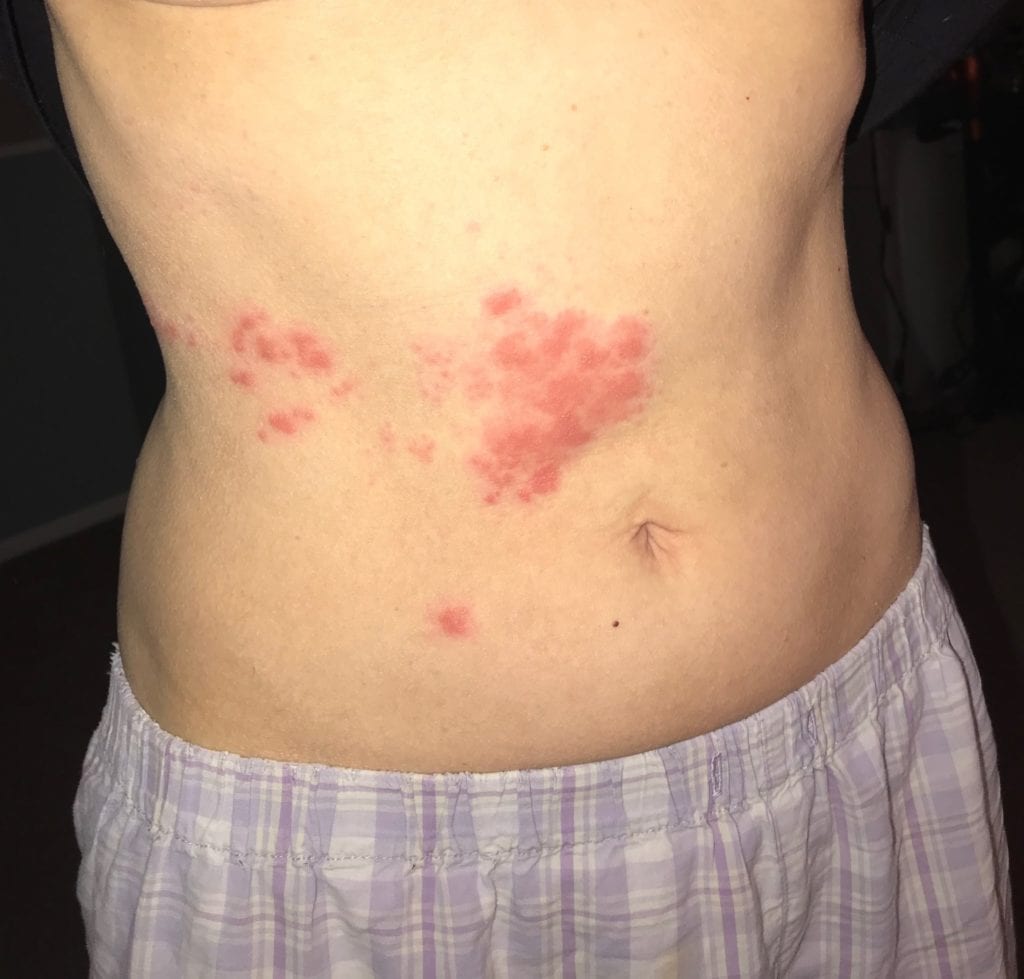

Nerve damage starts early in the acute phase of HZ prior to rash onset and may correlate with the severity of painful neuropathy. The virus travels along the sensory nerve to the skin, resulting in vesicular lesions, primary afferent nerve damage, and generalized cell necrosis. The reactivation of VZV in the sensory ganglia causes inflammation and neuronal destruction. There is limited evidence that smoking history and female gender may also contribute to increased PHN risk. Other risk factors include immunosuppression, diabetes, sensory abnormalities in the affected dermatomes, polyneuropathy, and trauma. The incidence of developing PHN is 10-25%, 1 and increases with age, more severe rash and acute HZ pain, ophthalmic involvement, and presence of prodromal symptoms (pain, dysesthesia, and allodynia).

Other potential factors may include physical and psychological stress and Caucasian ethnicity. 3,4 Human immunodeficiency virus (HIV), lymphoproliferative disorders, immunosuppressive therapies, and certain autoimmune diseases also increase HZ risk. While the life-time risk of developing HZ is 25 to 30%, it increases to 50% at age 80 years or older, largely as a result of diminished cell-mediated immunity. 1 Age greater than 50 years is the principal risk factor for developing HZ. 2 The incidence of HZ ranges from 3.4 to 4.8 cases per 1000 people per year. In the United States, 99% of adults over the age of 40 have been exposed to VZV and therefore are at risk for developing HZ. Epidemiology Including Risk Factors and Primary Prevention As immunity declines with age, VZV can reactivate, resulting in an acute HZ flare, due to reactivation of the virus. Initial infection by VZV causes varicella, also known as “chicken pox.” After resolution of the initial infection, the virus remains dormant in the dorsal sensory ganglia or cranial nerve ganglia of the nervous system. The timeframe of pain experienced between acute herpes zoster to PHN can be described as “zoster-associated pain.” Etiology Postherpetic neuralgia (PHN) is the most common complication of HZ in the immunocompetent patient, and is defined as dermatomal pain that persists for longer than 90 days (3 months) after resolution of the initial rash, 1 although this defined duration varies in the literature, anywhere from 1 to 6 months post rash resolution, it should be noted. Acute herpes zoster (HZ), also known as “shingles,” is a viral infection caused by reactivation of the dormant Varicella Zoster Virus (VZV).


 0 kommentar(er)
0 kommentar(er)
